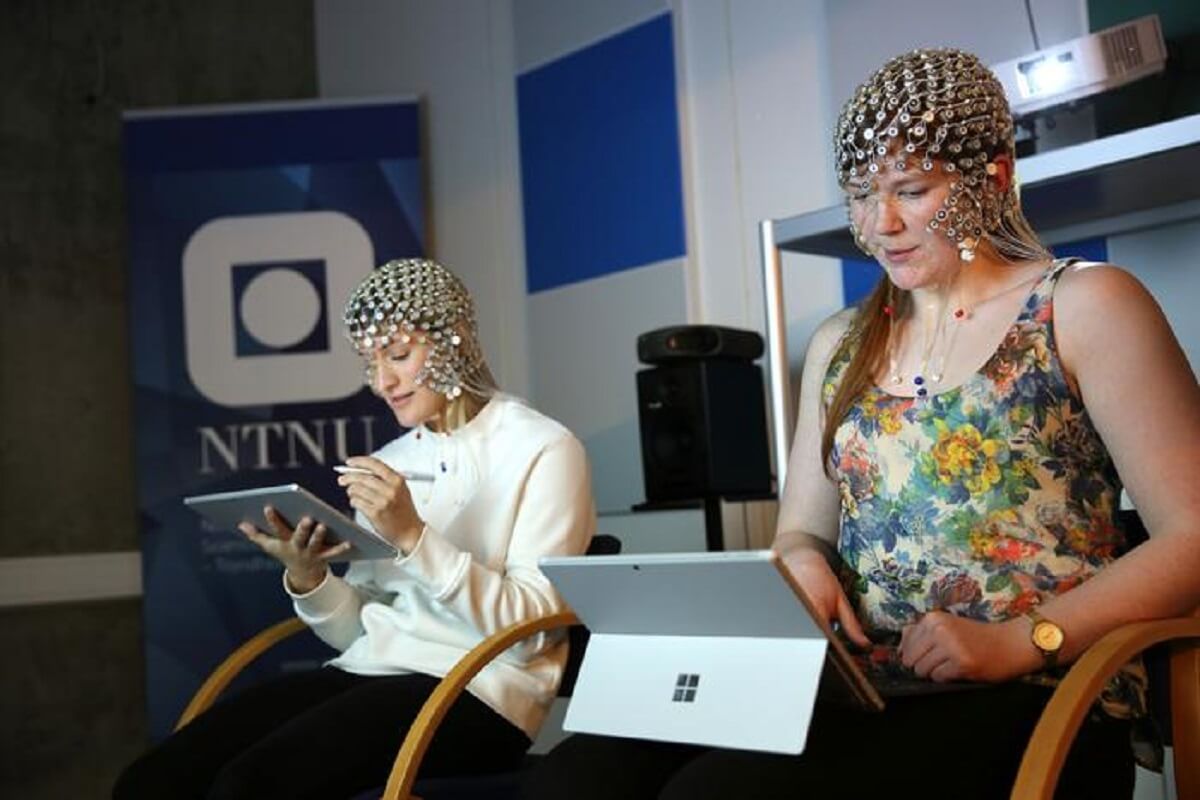TRONDHEIM, Norway — Writing by hand rather than typing on a keyboard boosts learning and memory, a new study reveals. This study involved 36 university students who had to either write or type words displayed on a screen. Using 256 sensors to measure brain activity, a team in Norway observed that handwriting significantly enhanced the connectivity between different brain regions, an effect they did not see while participants were typing.
“We show that when writing by hand, brain connectivity patterns are far more elaborate than when typewriting on a keyboard,” says Professor Audrey van der Meer, from the Norwegian University of Science and Technology (NTNU), in a media release. “Such widespread brain connectivity is known to be crucial for memory formation and for encoding new information and, therefore, is beneficial for learning.”
The study participants used a digital pen to write in cursive on a touchscreen, and they used one finger on a keyboard to type. The researchers used a special cap with 256 sensors, known as a high-density EEG, to measure the brain’s electrical activity. This cap was worn by the students, and their brain activity was recorded for five seconds each time they were prompted to write or type.

The team believes that the act of carefully forming letters by hand is more mentally stimulating than repetitively pressing keys with the same finger. The researchers also note that even though the participants used digital pens for writing in the study, they believe the findings would be similar if the participants used an ink pen and paper.
“We have shown that the differences in brain activity are related to the careful forming of the letters when writing by hand while making more use of the senses. Since it is the movement of the fingers carried out when forming letters that promotes brain connectivity, writing in print is also expected to have similar benefits for learning as cursive writing,” Professor van der Meer further adds. “This also explains why children who have learned to write and read on a tablet, can have difficulty differentiating between letters that are mirror images of each other, such as ‘b’ and ‘d’. They literally haven’t felt with their bodies what it feels like to produce those letters.”
Despite the ease and speed of typing, the study suggests that handwritten note-taking is becoming less common in educational settings. However, the researchers advocate for more opportunities for students to write by hand in schools and universities, citing evidence that handwritten notes can enhance learning and memory retention more effectively than typed notes.
“There is some evidence that students learn more and remember better when taking handwritten lecture notes, while using a computer with a keyboard may be more practical when writing a long text or essay,” Professor van der Meer concludes.
The study is published in the journal Frontiers in Psychology.
South West News Service writer Isobel Williams contributed to this report.

I wonder if this will become controversial.
Doubtful. Previous research has also shown improved retention of materials when taking notes by hand rather then typing. The results of that research hypothesized that typing is much faster which allows students to copy what teachers say verbatim. Handwriting is slower which requires students to essentially restate in their own words what the teacher is presenting. Thus making what is being presented more meaningful and easier to remember.
It’s more than the physical act. Handwriting involves right brain art, which synthesizes the two hemispheres in a mutually-reinforcing way. It is also slower, leading to a more contemplative restating of the facts in such a way as to increase the number of neural pathways imprinted with the memory stream and neural stimuli later called upon in the recall feed.
Not just a science claim. I copied nearly all my class notes in college by hand. For all courses in which I did so, I had ~100 averages.